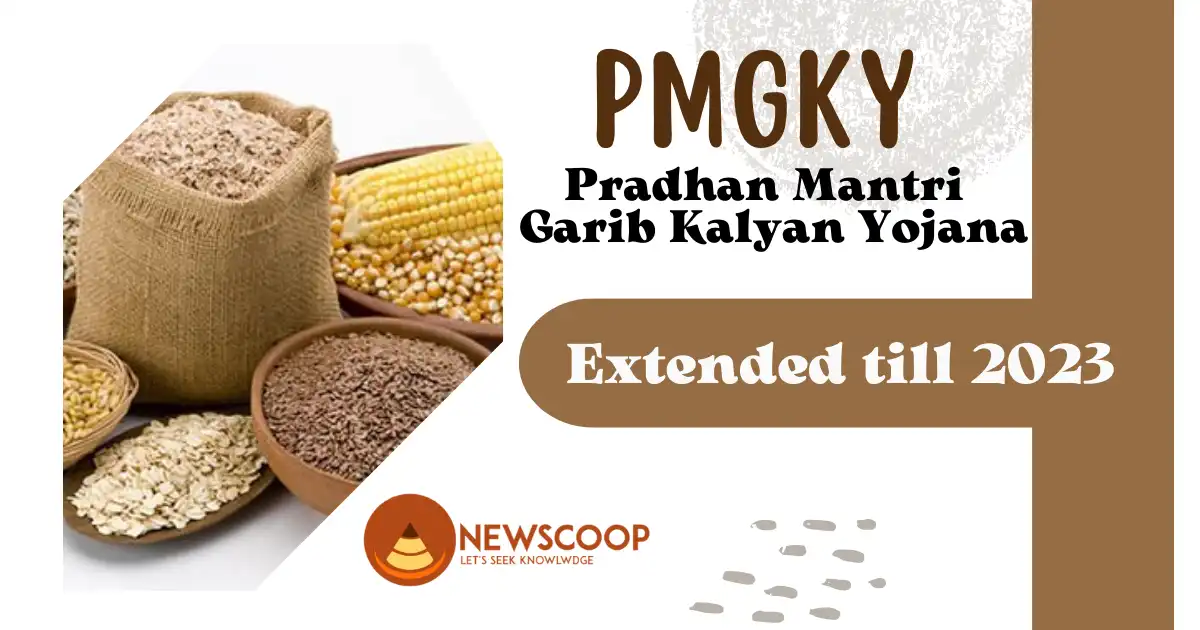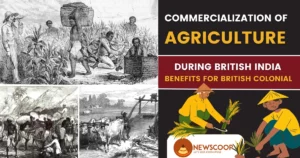Current Context:
The government has announced the closure of the Pradhan Mantri Garib Kalyan Yojana(PMGKY) from January 2023. In addition to this, the government has also announced to give 5kg per person food grain, free of cost, till December 2023.
About Pradhan Mantri Garib Kalyan Yojana(PMGKY)
On 24 March 2020, when the Prime Minister of India, Narendra Modi while addressing the country announced the lockdown, everyone was worried. The general public was worried about their health, but the biggest concern was that when the whole world has come to a standstill, how will they eat food?
At that time everyone was thinking that they might be saved from Covid but how would they be saved from hunger? Because of this, Pradhan Mantri Garib Kalyan Yojana(PMGKY) was announced, which covered more than 81 crore people. Under this scheme, the government will provide 5kg Rice, Wheat, or any other grain in 3 Rs, 2 Rs, and 1 Rs respectively to poor populations(75% rural Area, 50% urban areas) under the Public Distribution System(PDS) of Food Security Act.
Moreover, the poor section of society was being provided 5kg of food grains free of cost. So, under this scheme, a total of 10 kg of food grain was provided to each person. In this way, the government took the burden of hunger the people on its shoulders.
Points in Favour
- PMGKY is the world’s most expensive post-covid relief measure in the terms of fiscal expenditure.
- The cumulative cost of this scheme was 3.91 lakh crore, due to this, there has been an increase in the government’s food subsidy.
- PMGKY and cereals of PDS together constituted a 2.9 lakh crore food subsidy in 2021-22.
- Further, the budget of revenue expenditure may be shifted towards capital expenditure.
- Big relief to the government’s stressed food stock.
- High procurement will not increase the high inflation environment.
Criticism of Government Step
- The burden of food subsidy will be much less but as per experts, rolling back the PMGKY will increase the pressure on the poor population of the country.
- The cost of food grains Available in the market is many times more than the food grains available under the Public Distribution System and Pradhan Mantri Garib Kalyan Yojana(PMGKY).
- The production of paddy crops has declined significantly due to flooding. Due to this, the prices of these crops have increased in the market.
- According to statistics, the extra monthly expenditure of a family(5 members) will increase by Rs 575.
- According to the Delhi Socio-Economic Survey of 2018, the monthly expenditure of almost 90% of families of in the country is less than rupees 10000 per month.
- The data of more than 28 crore unorganized sector workers registered on Shram portal shows, 94% of them reported income of less than Rs 10000 per month.
- According to international reports, 90% of the population of India comes under the poor section.
Conclusion
A strong political will is required to end the public distribution system, as it will fuel protests against the government. Moreover, protests against the government will make it difficult for the government to achieve the medium-term fiscal consolidation targets.
It is not easy for any government to take such a decision, especially when the central elections are around the corner next year. In such a situation, everyone wants the government to extend the popular scheme like Pradhan Mantri Garib Kalyan Yojana for some more time so that vote bank politics can be spearheaded in a positive direction.
But the current government has taken this bold step keeping in view the deteriorating fiscal condition of India. Because on the one hand, it is true that India ranks 107 in the Global Hunger Index, on the other hand, India, which presides over the G-20 in 2022, is at the forefront of its total budgetary deficit among these countries.
India needs to work on two fronts simultaneously. So that the budgetary Deficit can be reduced by rationalizing the subsidies.
Thank You!
Also Read: World Largest Solar Park in India





